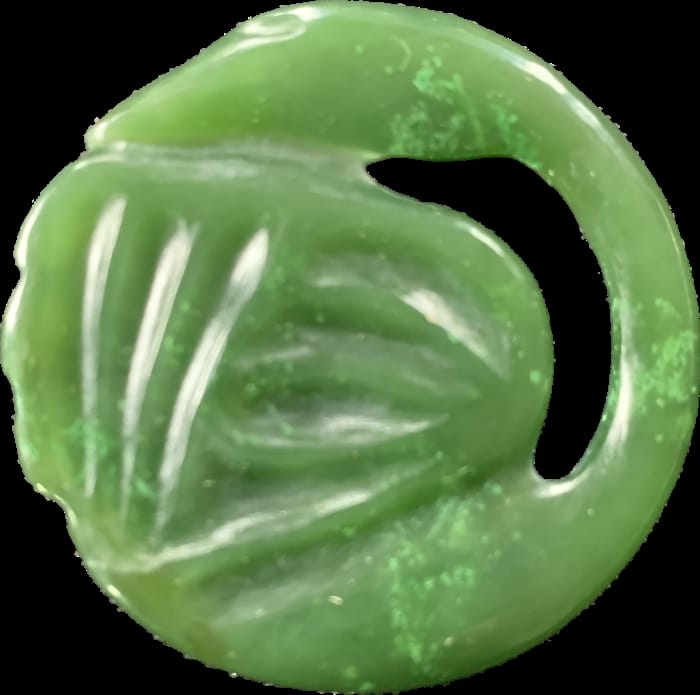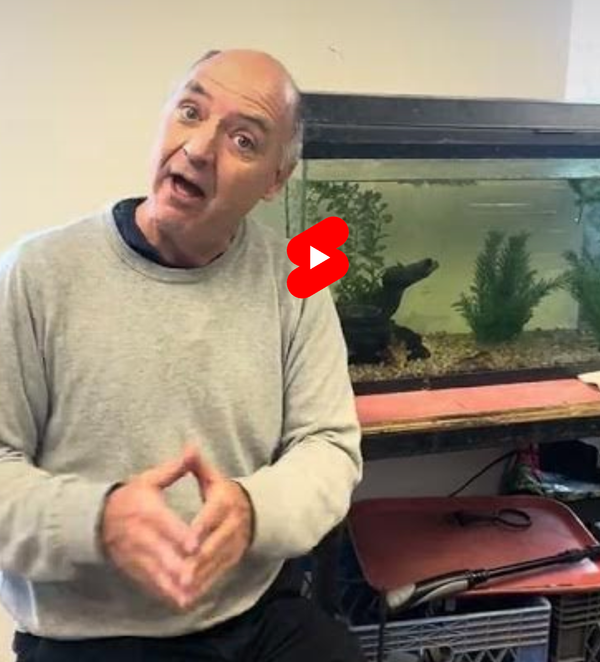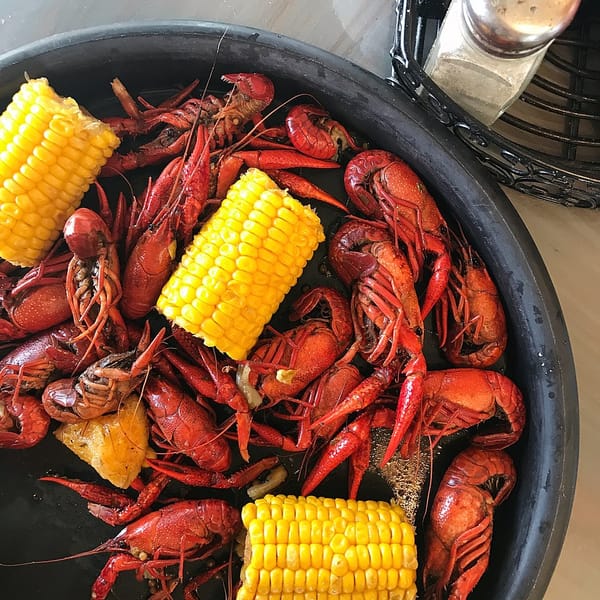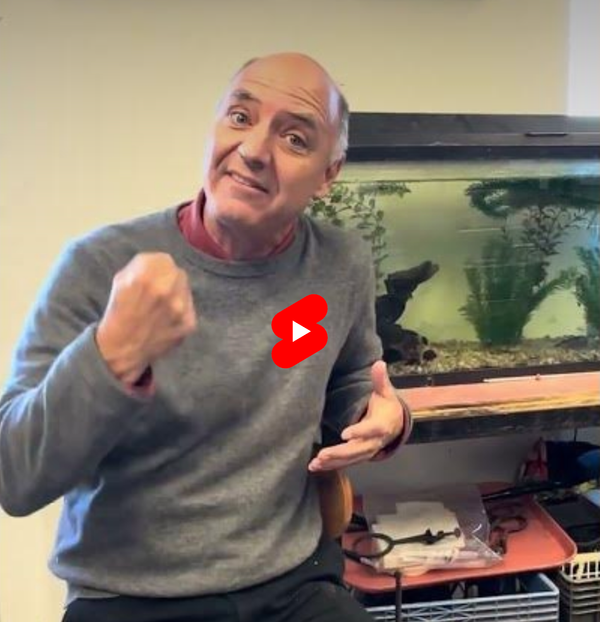Gods and Offering Bowls: Context From a Satellite Community of Sumer
Dr. Josh Stout makes the argument that this group of artifacts shown together present a body of work influenced by Sumer, Egypt and Mesopotamia, but still distinct from them.
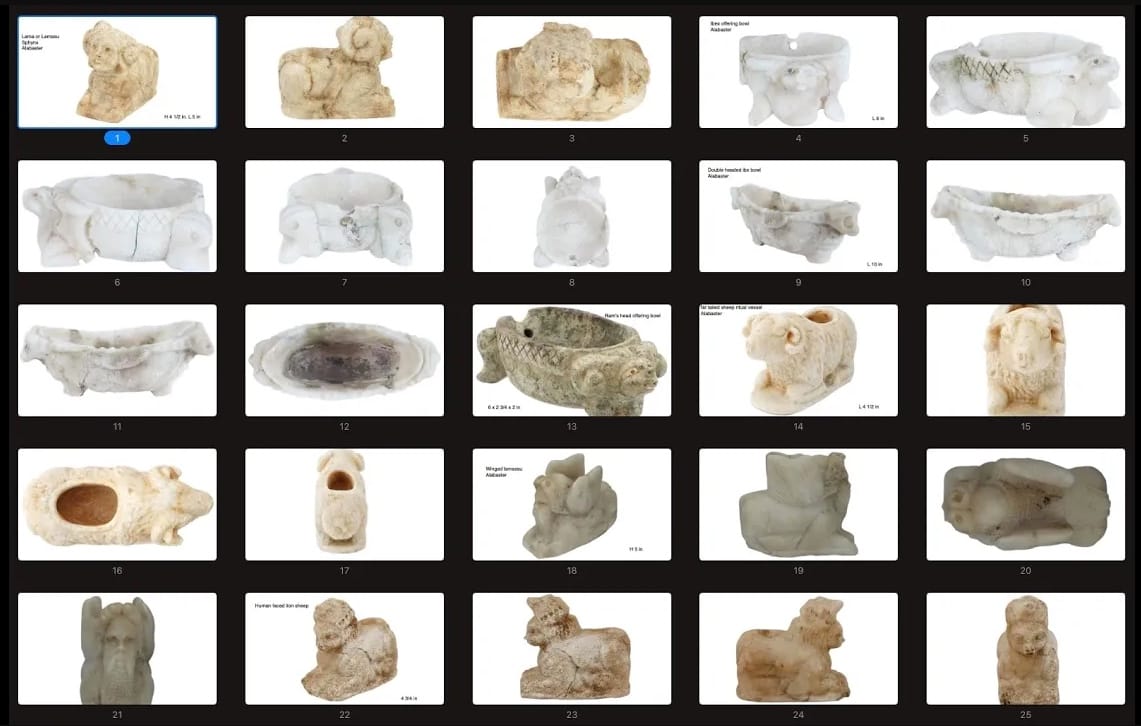
Below is lightly a edited AI generated transcript and there may be errors. Please scroll down for links below the transcript.
Eric:
And we're on! Welcome to Mind Body Evolution on video once again. This is so exciting, folks. Dr. Josh Stout.
Dr. Josh Stout:Hey everyone, this is so much fun. Again, I'm going into this lost civilization that I think I have found and I just want to run through a whole bunch of these artifacts that I do not possess that are out there. They are now in the sort of greater world of collectors.
Dr. Josh Stout:But I want to point out how they're all part of this single coherent group of artifacts.
Eric:What you're talking about is that these are the objects that you did not get that were on the website of the auction house.
Dr. Josh Stout:Right. But I collected all the photos.
Eric:And these are the context.
Dr. Josh Stout:These are the context. So again, these were not sold as Sumerian artifacts or Syrian artifacts or anything like that. These were sold as many different things, everything from Roman to Chinese.
Eric:And the point is that you seeing them on this site recognized, wait a second, these are not from all over the place.
Dr. Josh Stout:These are not from all over the place. These are a coherent group. So I just wanted to start off, you know, showing what some of these, what some of these look like and why I think they're all connected. Right. Yeah, here we go.
Eric:All right. You're on.
Dr. Josh Stout:OK. So
Dr. Josh Stout:this is a Lamassu with a flat human face. We talked about how Lamassus are the animal human hybrids. It's in the in that sphinx position that is not common in Sumerian work, but it's definitely a Sumerian influenced artifact. And I just wanted to show how many of these were bulls. So here you can see the sink position. You can see the the ram's horn and the and the human face there. And you can see how this is actually an offering bowl. So many, many of these artifacts were clearly part of offerings in temples. All right. I'm just going to keep running on through. Here we go.
Eric:Yeah.
Dr. Josh Stout:All right. So
Dr. Josh Stout:here is one that it was just itself a bull. But again, the same idea. You see the fat cheeks. You see the inset eyes, forward facing nose. So this is the half animal, half human face.
Eric:These fat cheeks are one of the things that you're seeing across board in every single one of the.
Dr. Josh Stout:It's a it's a it's a Sumerian characteristic that you see in a lot of artifacts in general. And I'm seeing it almost all of these at this site
Eric:All right.
Eric:Moving on.
Dr. Josh Stout:But also the look at the the the this goat head there with the the inset eyes, the fat cheeks, human face, forward pointing nose and not quite human. And the ear that something could have been put into horns going back. Also, this really interesting pattern where you have the incising on the side. That was part of the style that people were using. You can see the age here again, if these are fake, someone purposely broke it. And then the holes at the back. I don't understand these exactly. If you put your finger over it, you could stop. You could start it pouring or or stop it pouring. I think that dark residue there is actual residue from the substance that was held in this ball and the notch above it. At first, I was thinking these might be carving errors, but the notch above the hole seems to be something that's repeated again and again. I have no idea why.
Eric:Not an error. You see it in every single one.
Dr. Josh Stout:Well, I see it in several of them, not every single one. But this is, again, a characteristic. I can't I don't know what it's for, but it's something that I can see it's in common with these pieces. All right. So moving on again, this is the bowl looking down. And here we have the next offering bowl. So
Dr. Josh Stout:again, we have two goat's heads with somewhat humanoid faces. These ones, the eyes are much, much bigger, but we can see the horns forming the the rim of the bowl. And again, the whole thing is itself an offering bowl.
Eric:Do we do we see do we see offering bowls like across cultures?
Dr. Josh Stout:Yeah, that's that's a that's a very common thing to have offering bowls in a temple
Eric:used in a religious setting.
Dr. Josh Stout:Yeah. And we obviously don't know exactly what the rituals are, but there are accounts of of rituals where people have bowls of offerings and we can see it depicted in some of that.
Eric:So this is a common thing that we could compare to other civilizations and say these have things that set them apart and make them different.
Dr. Josh Stout:Yeah. So I'm just talking about this. This is a group of offering bowls. It's not the offering bowls that lets me know I'm looking at a new civilization. It's that they have these particular sets of characteristics. They have the fat cheeks, but they also combine Egyptian sphinx.
Eric:Right. What I was getting is that is that it is an object that we can see across cultures and civilizations, but you can you can mark that this one is unique to or
Dr. Josh Stout:this group
Eric:from a different group.
Dr. Josh Stout:And they're also made out of the same materials here. Let's keep going. So these these these are alabaster. They appear to have similar kinds of age to them, the same kind of staining. And they're depicting the same animals there. They're they're depicting these these these these these wide wild goats. The the the ibex and you can see the same kind of residues in them are often a lot of bitumen these dark residues. That greenish is interesting that might well have been a surface algae out on the on the where sunlight was actually hitting it either before or after it was collected. Here we go
Dr. Josh Stout:another offering bowl and you can see right away you can see that hole with a notch above it.
Eric:It's very clear now.
Dr. Josh Stout:No idea why it is. You can see that same goat head with the inset eyes, the big puffy cheeks, forward pointing nose. Notice the back legs. There are these stylized back legs that also occur on all of these. They have that particular shape. I don't know what that little circle is. Is that another eye or is that representing the joint of the back leg? Hard for me to see. Here we have one of the few offering bowls where it's not kneeling in a sphinx manner. So this is actually that one that I was just showing is actually much more typical. Sumerian version. It's showing a fathead sheep. But again, it's the same kind of things. It's it's they're showing goats. They're showing sheep. They're using uh they're using um uh alabaster as as their medium. The fat cheeks. The eyes. The same kind of stuff. So so even if they don't fit exactly every single one exactly the same, you're seeing very similar things that connect them. And
Eric:these are things that also uh that also set these objects apart from similar objects.
Dr. Josh Stout:From similar objects. Yeah and I just
Dr. Josh Stout:I wanted to show this too much more in a way around. But yeah, I'm going to show you what's going to tell you. Okay yeah, that's what I want to show you. It's a nice personality. You can see it's very clearly a well-made offering bowl and the fat tail. This this fat tail on the sheep is something that is uh throughout the Middle East today. These are these are an ancient breed of sheep that have tails that really just do look like that. The fat tails.
Eric:Okay.
Dr. Josh Stout:So it lets you know that you're definitely looking at a mess of Potamian area. Uh but it could be really anywhere.
Eric:That's interesting.
Dr. Josh Stout:Anywhere from Persia to to to say Jordan. All right. All right. Uh Iran obviously. All right continuing on. All right. So we are now done with the offering bowls. We've gotten to Lamassu. I'm going to do the next one as a section of Lamassu. Uh so these...
Eric:Let's just stop for a brief moment. So you just went through all your offering bowls that
Dr. Josh Stout:yes
Eric:that that that bring this all together for you and now we're moving into a different group.
Dr. Josh Stout:Right.
Dr. Josh Stout:So the Lamassu are a group of um apotropaic images. So these they turn away evil. They are good luck.
Eric:Oh I like that.
Dr. Josh Stout:And so um many of the offering bowls were themselves Lamassu.
Eric:I'm sorry that's a new word to me. Apotropaic.
Dr. Josh Stout:Right. So uh tropisms are our turns. Like a trope is a turn of phrase and apple means away from. So apotropaic uh images or or depictions or or amulets turn away evil. They're good luck. And so uh the offering bowls combined Lamassu with uh an offering. So it's the perfect thing in a temple. It's it's it's sacred. It's it's giving the offering uh and at the same time it's protecting the temple. It's turning away evil. No demons can be involved in this uh and demons were definitely an active uh force in this in these cultures um because it's been protected by the Lamassu itself. So the evil has been turned away.
Dr. Josh Stout:The offering is being given in the temple. And in many cases uh there was the idea that the the carving would
represent perhaps the giver of of uh of the offering. And so the carving would sit there with its happy fat cheeks and its big eyes looking at perhaps this larger image. And that's another thing I uh want to think about is um I only have these little tiny pieces and the ones that made it to this auction were little tiny pieces. Very often when there's a whole collection like this there would have been monumental statues they're associated with. Uh
Eric:you you mentioned this before. So you were you were saying that that the the smaller uh the smaller figures might have been placed in a position of constant devotion to the larger figures.
Dr. Josh Stout:To the larger figures and I have not personally excavated anything so I have not seen this but I have read about it in the texts. I haven't seen great pictures of this happening but I've read about it that it does happen.
Eric:So you you make these objects and they carry out the devotion for you.
Dr. Josh Stout:They can carry out the devotion. So but in this context they would be doing it magically. They they would be protecting it carrying it out for you and and and and giving it in the bowl. Exactly.
Eric:How could a stone object be be devoting? Of course it's magic.
Dr. Josh Stout:Yeah yeah yeah exactly. Magic. So it but it's magic in sort of several different directions at the same time. Protective and it's you and it's the offering. So all of all of those things are happening at the same time.
Eric:This was this was the offering Lamassu.
Dr. Josh Stout:Exactly.
Eric:So now you're moving on.
Dr. Josh Stout:So yeah I was moving on I just wanted to mention that um we don't have the monumental statues. Right. So those are probably sitting in a palace or a or or someone's um you know someone's someone's giant house somewhere uh illegally. The the um the market for these things disappeared in the early 2000s when Christie's and uh and Sotheby's stopped selling them uh which was good right. They they refused to sell anything without a provenance because it was so much looting after the Iran-Iraq war and after the Iraq-US war.
Eric:Literally they were not selling things without a provenance?
Dr. Josh Stout:If they did they started then they should have started a little earlier but that's when they started. And and and the bottom went out of the market and so none of these pieces are being sold really legally uh through you know western style markets um but they're going somewhere. People are still looting them. The examples I'm showing.
Eric:People people are looting them and also people are buying them. Like all of these objects.
Dr. Josh Stout:Someone's
Dr. Josh Stout:got to be. So these.
Eric:Showing today they're sold. Someone owns them.
Dr. Josh Stout:These were all sold but these were essentially laundered uh through something that normally sells fakes and then they are incorrectly labeled so they got pennies on the dollar for them. But the big pieces the monumental statues were probably sold privately to large names uh and they're there they were collected um don't know where but but you know my my guess would be somewhere in the region so.
Eric:But my point was that people are actually interested in these things. People are buying them even if they're mislabeled and they we don't know where they're from.
Dr. Josh Stout:Well because these are beautiful statues and they seem to have maybe some age to them. So you know it's worth collecting for the same reasons I did. I I I wanted to buy something that you know looked like it had some soul to it, looked like someone had put some thought into it. And that's what I look for when I'm collecting. I don't I don't know if it's necessarily old but I see that there is there's some life to it, there's a feeling.
Eric:Yeah it's it's legitimately a fake it's a good one.
Dr. Josh Stout:Yeah exactly.
Dr. Josh Stout:And so that that's what I'm looking for because I I I'm not setting out to loot artifacts right. I'm setting out to buy things that that touch me personally and I'm looking for things where you know whatever it is if it's modern or if it's older someone put some real thought into it and that's what I want to bring into my house. I want to bring a connection to the carver to the culture to the people that were making something. And in this case yeah I started panicking because I realized the connection was to people maybe four thousand maybe six thousand years ago. And
Eric:well you don't panic you mean you started getting excited.
Dr. Josh Stout:Excited
Dr. Josh Stout:but also worried. Worried that these things were all going to be lost if I didn't start recording it. Which is why I'm showing you these things right now.
Eric:Right.
Dr. Josh Stout:All of those things I just showed you were not things I bought but part of this larger collection that I think I've discovered. And my panic was oh my god these things are lost forever unless I get this photo right now. Many of these photos are no longer online. You would not be able to find them and if it weren't for what I just showed they are lost. And so that's what I mean by panic. I I hate the idea of a whole civilization coming and going without us even knowing. It's like when you chop down the rainforest and there's species that go extinct before you've ever discovered them. This is this is a civilization that could have been lost before we ever found it.
Eric:All right well let's move forward let's keep taking a look at this stuff.
Dr. Josh Stout:All right so now I wanted to show um collections of of Lamassu. So here you can see some of the same characteristic uh
Dr. Josh Stout:this is a slightly more humanoid uh Lamassu.
Eric:I love this.
Dr. Josh Stout:But you can see its its face is slightly protruder protuberant. You can see it's sticking out a little bit there but the nose is pointing down it's much more human uh than some of them. Those things that look like goggles on top those are ram's horns uh and you can see below the ram's horn is a crown you can see the wings coming up. So this is a a a a flying Lamassu. It's in the sphinx position. It probably had uh lion claws um you can see the wings a little bit better here. Um sometimes there were two pairs of wings sometimes with a single pair of wings um they have different characteristics. I like little dots at the at the ends of the wings there um almost like the way a butterfly wing would be and and several of these are do comes in sets of four. Not the way an eagle would have two wings but the way a butterfly would have four and I I do wonder about that.
Eric:Yeah.
Dr. Josh Stout:I want to keep moving forward.
Eric:Yes.
Dr. Josh Stout:Okay so you can see the beard you can see the crown and you can see the lion stance. And then looking down this one is not an offering ball but again you can see remnants. So it seems like some of these things were anointed with some sort of oil that dried into this black residue uh and you can see the nice inset eyes and the beard there. The holes in the beard are characteristic of some Syrian statues that I've seen. Uh the the the city of Mari is known for beards made with drilled holes like that.
Eric:And you you the the the the object that you showed the first time around the seated king has uh holes in the beard too.
Dr. Josh Stout:Yeah exactly.
Eric:In the clothing.
Dr. Josh Stout:Yeah and and and they they have they have a Syrian feel to me. Again I don't know if this is from Syria but it's connected to some known artifacts that are drilled in that particular way to form the beard.
Eric:That is a known style?
Dr. Josh Stout:A somewhat known style. It's really hard to pin anything down. All right. I want to keep moving on. Uh here we go.
Dr. Josh Stout:Here's another uh Lamasu. This one's interesting because instead of being a combination of a human and a lion uh or sorry a human yeah human and a and a goat. This is a human and a lion with with a with a mane. So the hair coming down is a human type hair but it's forming a lion's mane and instead of horns you have this crown on top and so you can see there's the there's the crown those are not horns those would be jewels or something with the mane below it and you can see a a fairly human face with the fat cheeks and then the whole thing is in this um uh sphinx position with the clawed feet in front um see if you can see the clawed feet there we can see the clawed feet and you can see fat happy cheeks again um but this one being almost entirely lion uh so much more close to to an actual uh egyptians Sphinx so we have a human face on something that's entirely lion
Eric:yeah
Dr. Josh Stout:all right continuing moving on uh from that you can see the back end the back end actually looks a bit like uh some of the um the sheep rear ends so there might be some sheep influence there um whoops and we've gone too far all right so now we are through the Lamassu
Eric:okay
Dr. Josh Stout:uh okay uh so the this again is another collection showing the same set of the same kinds of things these are i
Eric:mean this next this next group that you're showing
Dr. Josh Stout:what i was just showing okay so i've been showing these apotropaic offerings that would have been in the temple given to the god the god was whatever god was in that temple that could have been in um some usually a single temple to a single god and usually a set of single kinds of offerings to a single god so we might be looking at looted multiple temples from the same city uh because there's definitely things in common to them but for example the lion might have been in a different temple from the bull which might have been in a different temple from the sheep which might have been in a different temple from the goats
Eric:right
Dr. Josh Stout:but sometimes they're all combined into the same thing and that could be maybe the the king of the gods was combining all of these together or or you know it could have been Inanna the queen of the gods many of these things have you know multiple attributes so i'm not saying definitively if this was multiple sites or a single site i'm just saying definitively this was one civilization
Eric:that they that they embody a context
Dr. Josh Stout:they
Dr. Josh Stout:embody a context and they and these and these artifacts and represent this larger context and we see um Lamassu made into offering bowls Lamassu as Lamassu uh where you see um you know all the characteristics the human face the animal form often combined with lion usually the powerful animals you have a combination of powerful domesticated animals uh goats bulls and sheep uh not little tiny weak sheep these are powerful big sheep with big horns uh and the same the same with with with with with with the goats these are not little tiny goats these are the wild mountain goats that represent the mountains themselves they represent uh the spirit of nature um they're they're the the the name for these things in you know in current arabic uh literally means like the the village wild goats essentially you know it says these are the things that are not in the city these are not the bred ones i
Eric:You were saying that the lamassu is is the nature spirit, the essence of the nature spirit.
Dr. Josh Stout:because the the the anzu is
Eric:the anzu
Dr. Josh Stout:is the nature spirit the Lamassu is is is much more this idea of um the protective uh deity so it combines the images of the king perhaps with the images of the god into one thing with the images of these powerful animals and then often with the addition of wings so they have flight so they're not supposed to be representing real animals these are representing spiritual things anytime you have flight you you're going up into heaven you're connecting you know heaven and earth together um one of the bulls i was showing uh earlier uh i think had winged feet i didn't make much of it because it's really hard to tell exactly but if you look very very closely it looked like they had wings on their feet not a sumerian characteristic they don't tend to put wings on their animal's feet but this would be one sort of going in the same context many of the wings are on the back sometimes it's two sometimes it's four wings uh and then there was one bull that i had that had wings on its feet so it would be flying up the way you know um Hermes would with wings on his ankles uh
Eric:do you want to move on to the to the wings section or uh we save that for another week
Dr. Josh Stout:we can save that for another episode i think you know so we these the two episodes the two things i did just now connected by the Lamassu and we have the lost Lamassu as offering bowl and uh Lamassu as Lamassu but they're all the same they're all made of roughly all the same kind of stuff the same kind of of of alabaster similar sites similar sizes like they were all trying for one particular kind of thing
Eric:yeah they clearly were these were meant to be to be held in your hand
Dr. Josh Stout:and and and with a real similar kind of context to them they all they all appear to be something that was put into a temple and that's a very common thing in in sumerian culture that's like a thing that we know they did and they made lots and lots of these offerings in in the temple
Eric:and you're convincing me because these these all have great similarities
Dr. Josh Stout:they really do
Eric:they're all labeled from being all over the world so
Dr. Josh Stout:and they're labeled from all over the world
Eric:that doesn't that doesn't make sense
Dr. Josh Stout:it doesn't make sense so they weren't trying to get top dollar by selling looted artifacts they were trying to just make any money from stuff that couldn't otherwise be sold because reputable auction houses have started requiring a provenance and so i think they were they were they were basically fencing these things instead of selling them
Eric:In the next one we're gonna move on to see what what
Dr. Josh Stout:are we uh the next one i want to show some um uh i want to show uh the anzu pendants again these are again uh protective apatropaic things uh but often worn on the neck so these were personal amulets
Eric:so now we're moving from from devotional objects that were found in a place
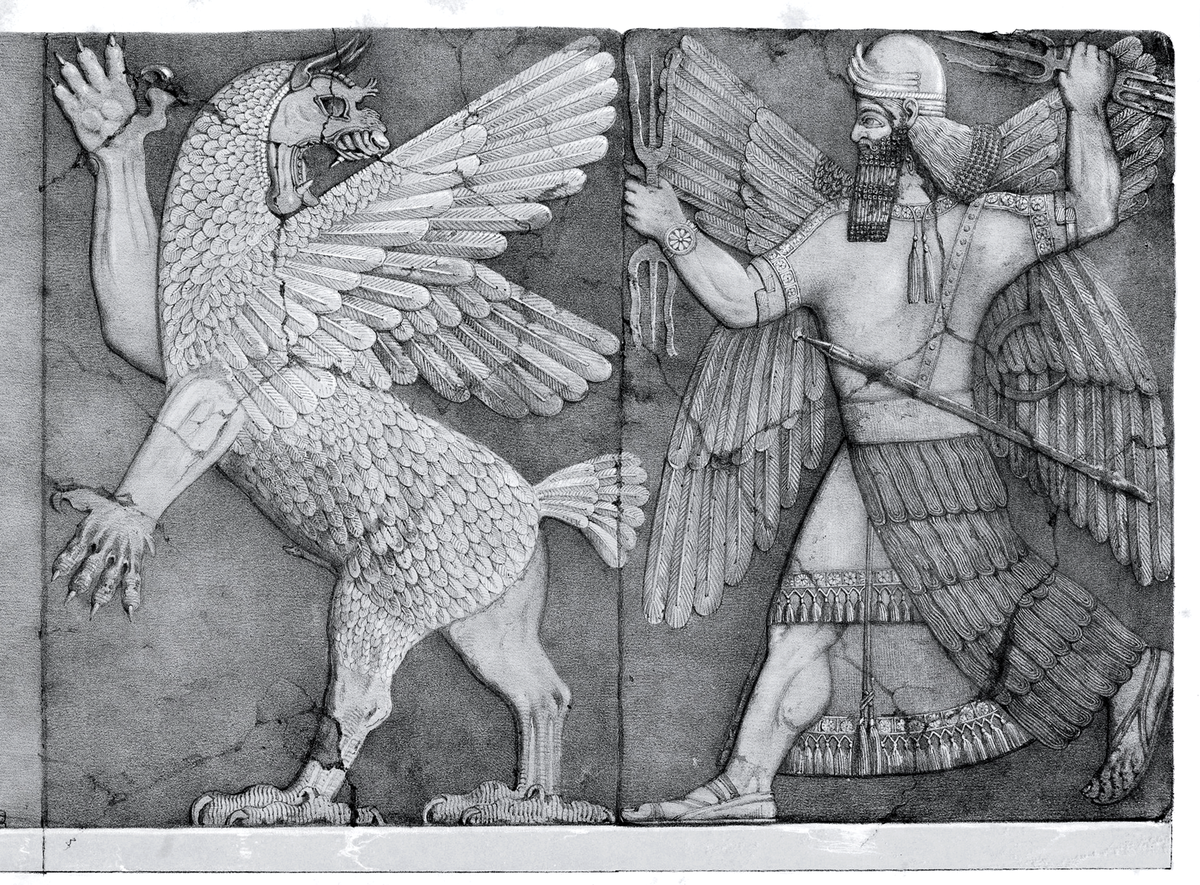
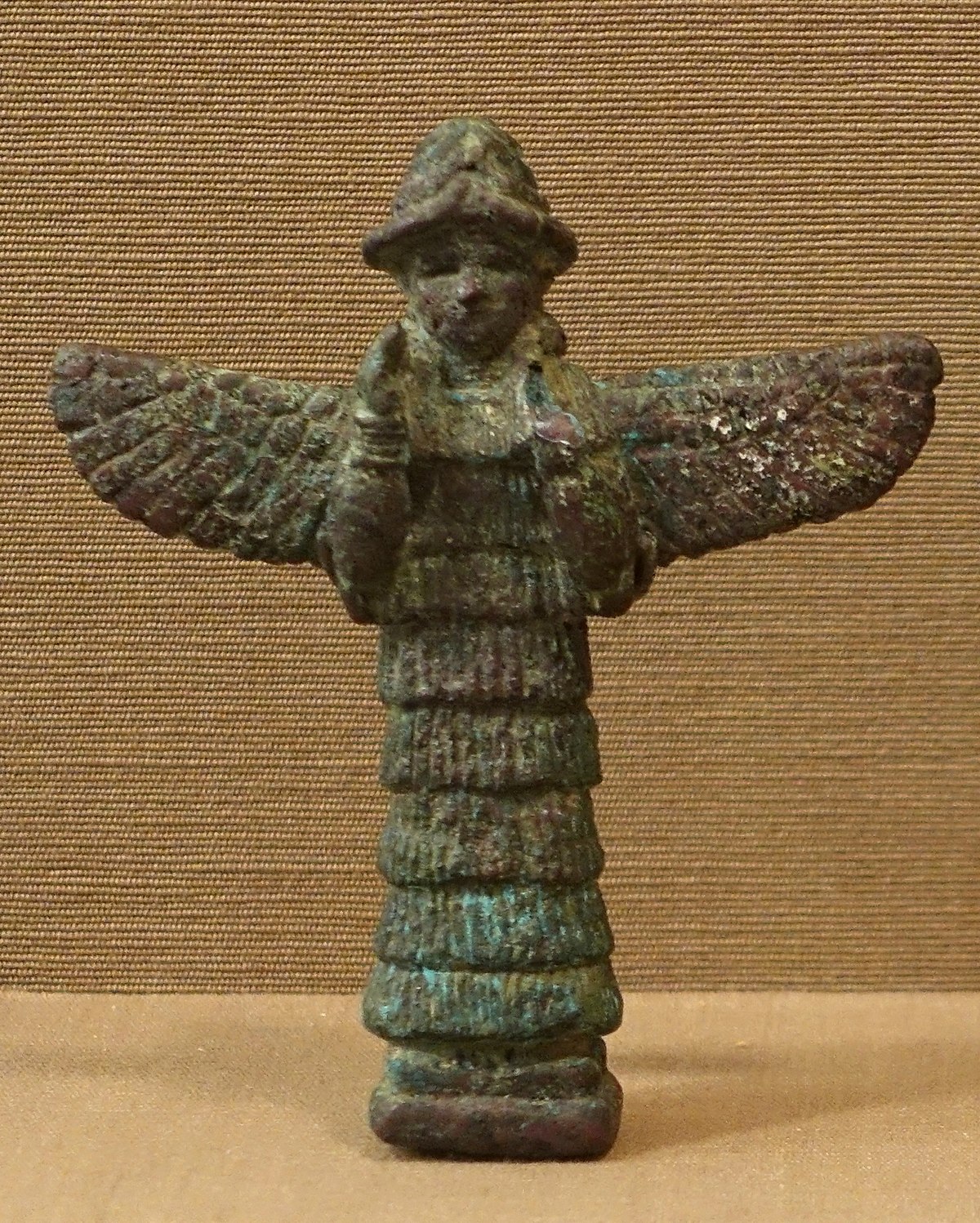
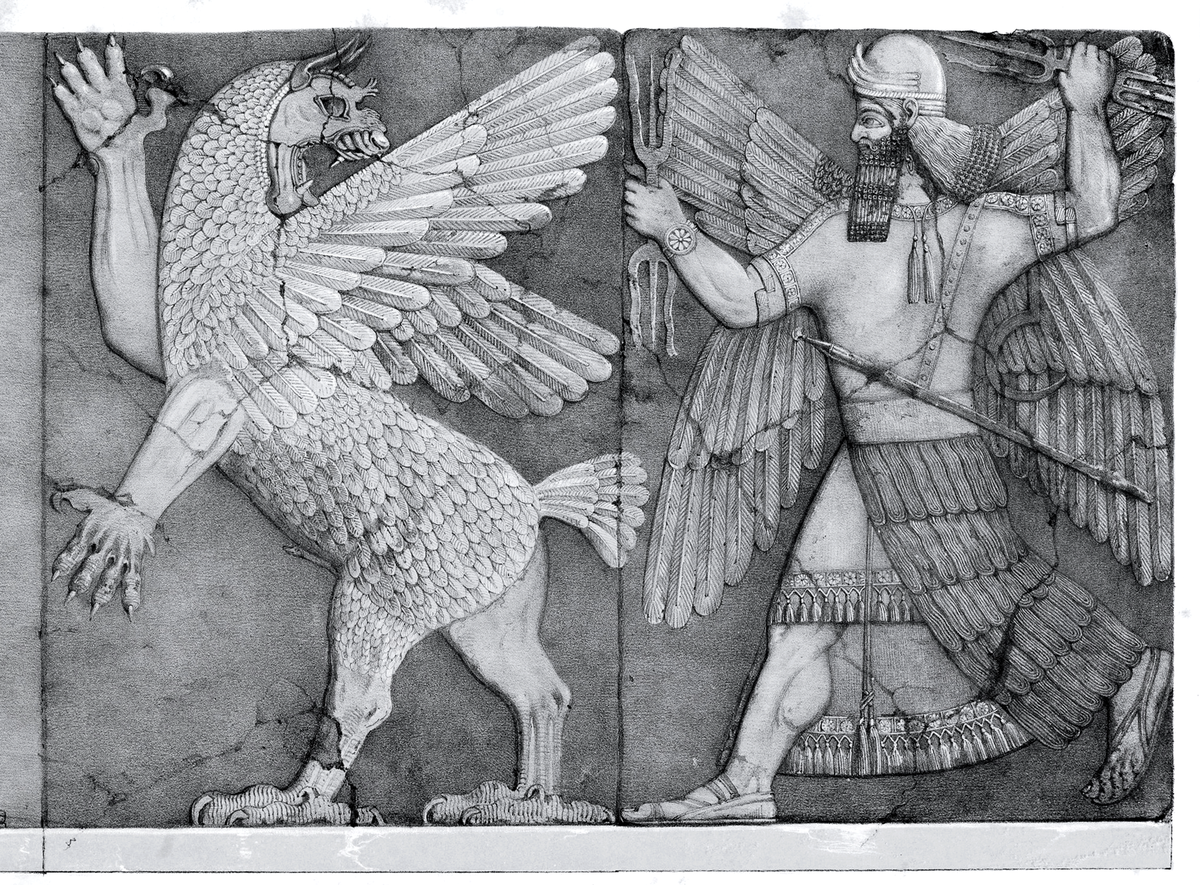
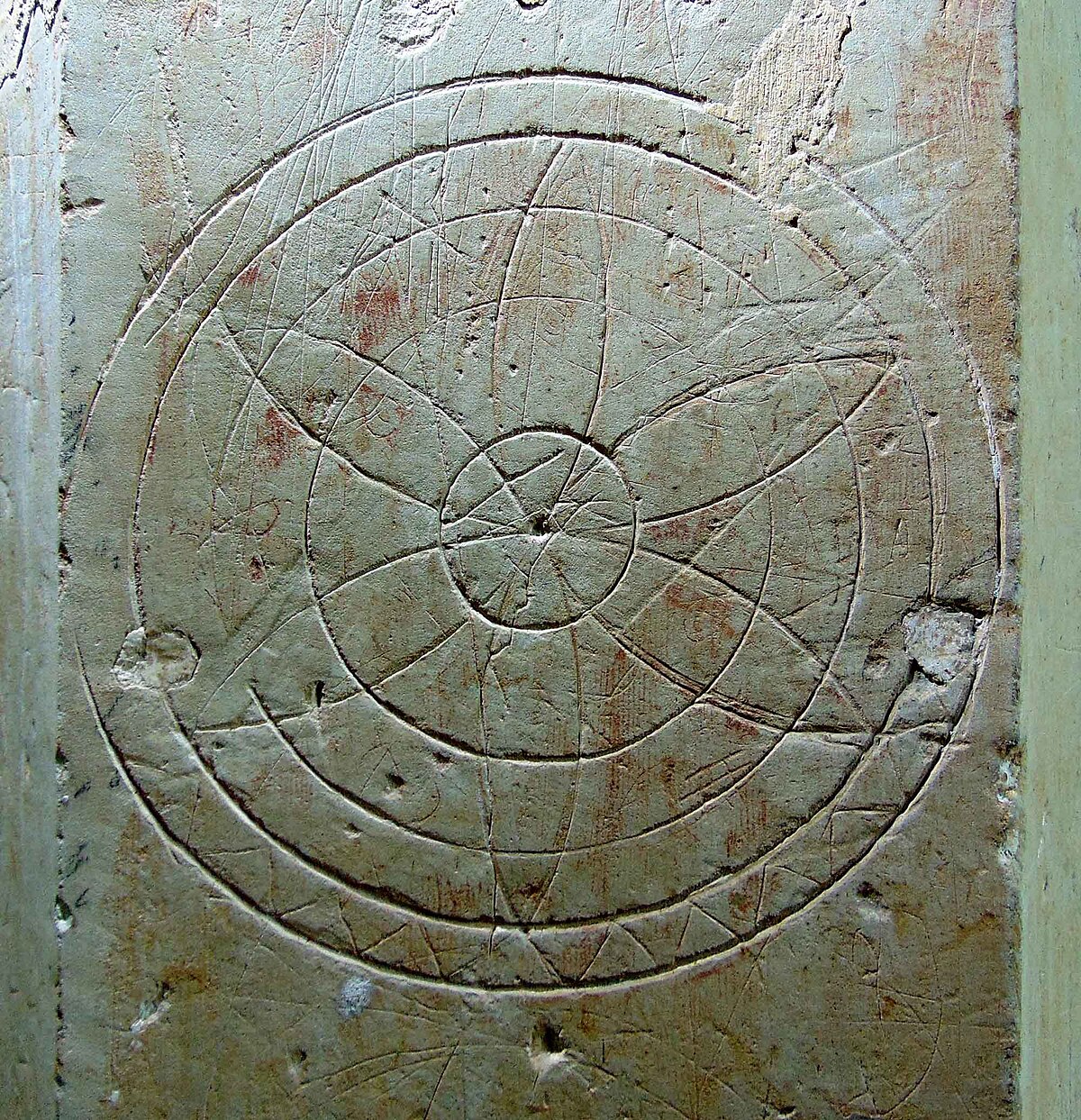
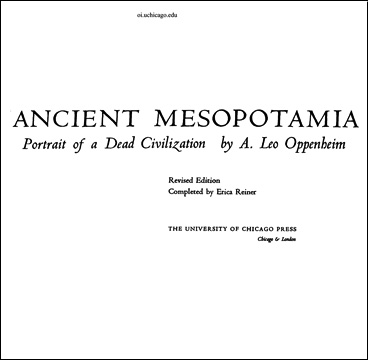
Theme Music
Theme music by
sirobosi frawstakwa

